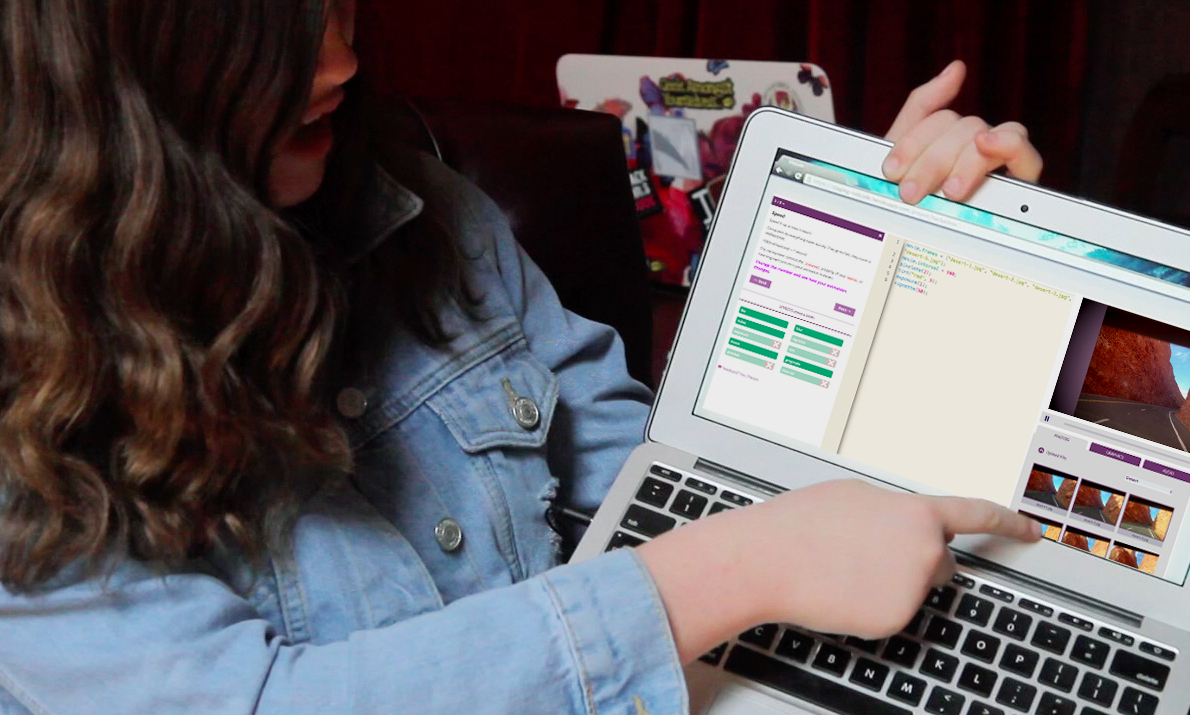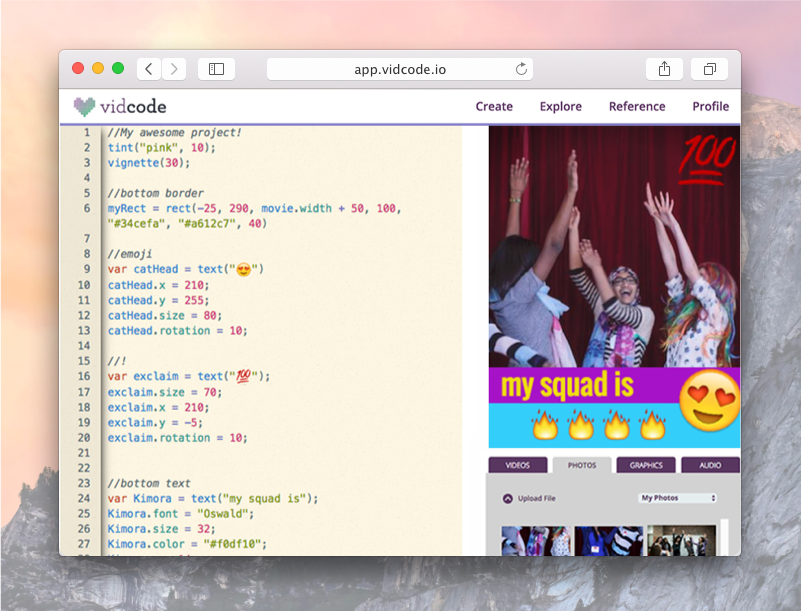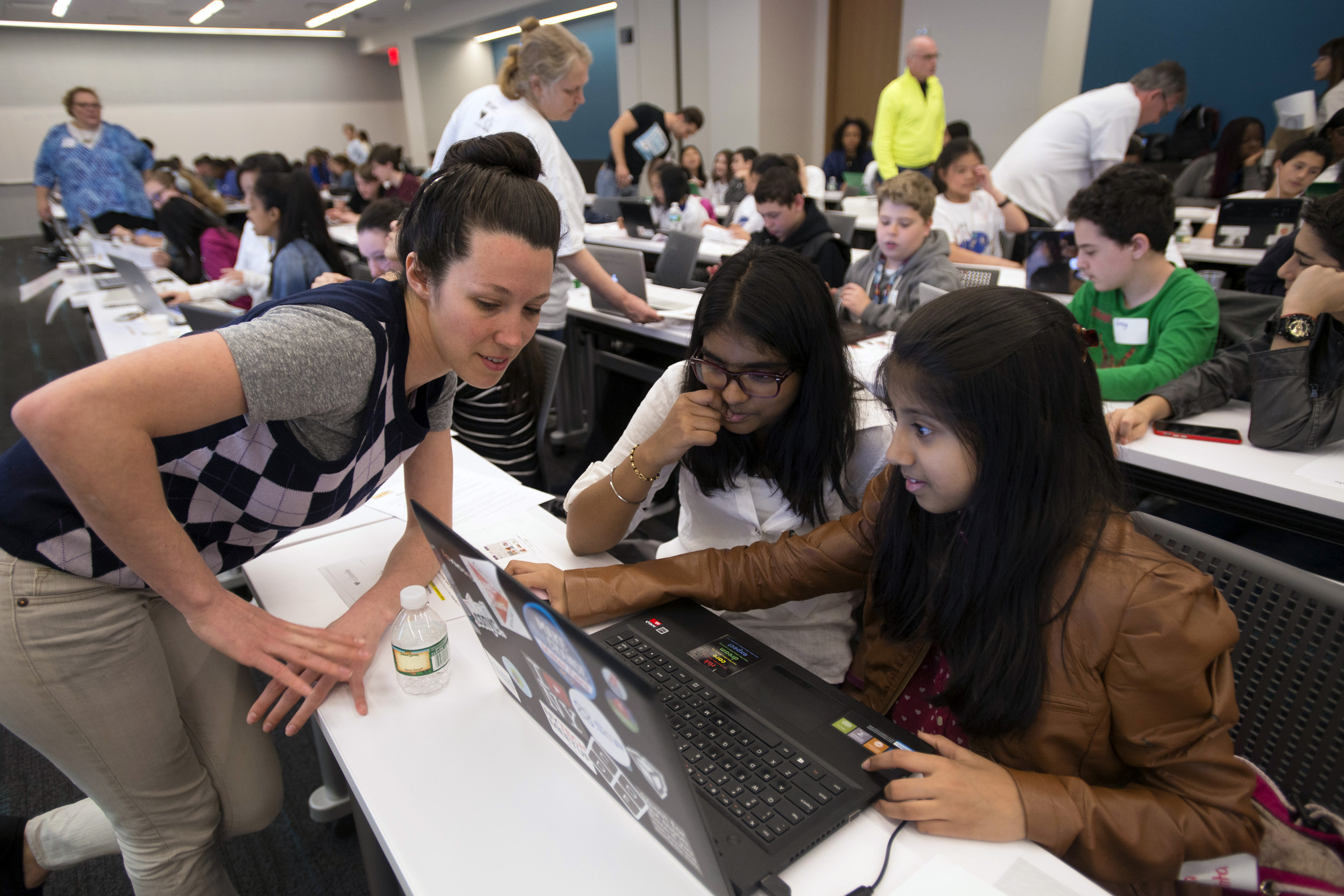
Vidcode teaches teens to code through their favorite video technologies: Instagram, Snapchat and AR. Students learn to code special effects with JavaScript and then share it with their friends. We sat down with Leandra Tejedor, Melissa Halfon, and Alexandra (Allie) Diracles to talk about what they’re building.
What YC Likes About Vidcode:
"One of our nation’s educational imperatives is to teach more children to code. Vidcode does this by creating fun and engaging social media projects that are interesting to everyone, not just boys already interested in computers. Allie, Melissa and Leandra bring a unique and powerful vision to coding education."
-Tim Brady, Partner at Y Combinator
YC : How did you come up with Vidcode?
Melissa: I was always one of few women in the room at work and school. I was a software developer in finance and a math major in college. There were never many of us and I wanted to change that.
At a hackathon, I pitched an idea to get more girls and women into STEM. Leandra and Allie had different ideas but shared the overall goal, so we started working together. We built the prototype of Vidcode that weekend and ended up winning the hackathon.
YC : There are tons of programs teaching people how to code. How are you different?
Allie: We approach the problem in a different way. More than 80% of teenagers interact with video in some way each day but most learn to code programs are teaching through gaming, robotics, or Scratch.
Those are all great but the projects they make aren’t used by a significant portion of the teenage population. Gaming or robotics may not be the best entry points for some teenagers.
We’re using something teens are already on - video - and building a curriculum around that. It’s the same thing as a 13-year-old boy in the 80s realizing he could reverse engineer a game. We want to provide that same experience for girls today and use videos as a catalyst for getting them interested in programming.
YC : Can you explain how Vidcode works for users?
Leandra: After a teacher or school signs up a classroom, the teacher receives a link to access Vidcode. The teacher and students think about what kind of coding project they want to create. That creates a sense of ownership among the students.
Then they take existing content they have from Snapchat or Instagram and upload it to our platform, where they modify it through our self-guided lessons. The end product is uploaded into their portfolio, which can be used when they apply for high school or college.

YC : That sounds less intimidating than some of the other programs out there.
Melissa: For sure. We see really high engagement from both students and teachers. We started doing professional development to coach teachers on how to integrate this into their lesson plan and we hear so many interesting ideas. A lot of people think of coding in a really abstract way but after they’re able to see it in a format they understand and can visualize, they finally get what coding can do.
YC : What’s an interesting lesson idea you’ve seen?
Allie: One thing we mention during our lessons is that the best way to teach your students is through the context of things they’re already interested in. One teacher decided to focus on Beyonce. The students started talking about JavaScript booleans through the lens of what Beyonce does and does not do. For example:
beyonce.isAsurvivor = true;
beyonce.gonnaGiveUp = false;
They started calling it Bey Language. (laughter)
You have to make lessons very personal. That’s why we’re partnering with Snapchat to do a filter challenge. Students will get to listen to Snapchat developers talk about their work and then create their own geofilter. The students will get to vote on which one is the best and (1) the winner gets their geofilter uploaded onto Snapchat at their specific location (2) the winner gets their filter to be added as a filter for all snapchatters to access.

YC : That’s awesome. I like that you’re looping larger tech companies into the solution.
Allie: Yeah, we’re also working with other nonprofits and the White House as well. The United States is really behind when it comes to implementing programming initiatives. Teachers in the U.S. are just getting started and there’s no standardized curriculum.
In the U.K., they have an established curriculum, they start teaching their students Python at a very early age. We see a need to come together as a community if we’re going to prepare our kids for a future where technology will play an increasingly important role in all our lives.
Leandra: The White House announced CS For All recently and has dedicated a lot of federal funds towards computer science initiatives. But if we’re going to get every school involved within ten years, they’ll need all the help they can get.
YC : How do you see Vidcode evolving?
Allie: We want to own the education video vertical because we think it’s going to play a huge part in getting kids interested in programming. We want to be a huge coding and content platform that teaches people to create and showcase their content. We know that the content will change and so we’ll adapt Vidcode as newer technologies like augmented reality and computer vision gain mainstream attention. Ultimately, we want to provide a space for people to learn how to code who wouldn’t otherwise be interested in programming.